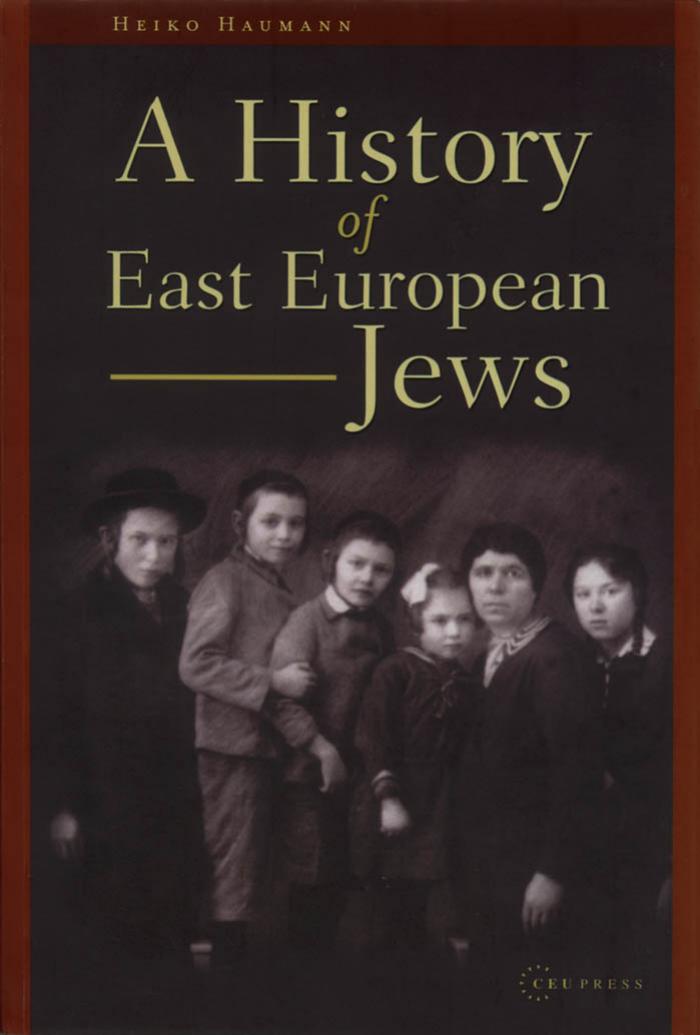A History of East European Jews by Heiko Haumann

Author:Heiko Haumann
Language: eng
Format: epub, pdf
ISBN: 9639241377
Published: 2011-04-21T16:00:00+00:00
Jewish women on the way to the synagogue
The temple of the wonder-rabbi of Sadagora
Crockery washers in Lodz, who made crockery kosher before Passover
Rabbis on the way to the synagogue in Lodz
Jewish clothing traders in Vilnius
Jewish girls in the embroidery workshop of the Jewish 'Help through Work' society
Cracow Street in Lublin
_'» JM.WW /^ i I
Jewish paper goods salesmen in Vilnius
Jewish clothing traders in the ghetto in Vilnius
Jewish families return to their homeland
INCREASING CONFLICTS WITH THE NON-JEWISH WORLD
The altered social relations—the radical socio-economic changes, the intellectual and religious transformations, the hardening of the political situation—had their effect on Jewish identity. In his novel The Estate, Isaac Singer has a Jewish student who has turned his back on religion say
The Polish Jew ... formerly had a real place in society. Before the liberation of the serfs [1864 in Poland—H. H.] his role was that of intermediary between the manorial lords and the peasants. That role was now a thing of the past and now he was little more than a parasite. He was not productive, did not speak the language of the country in which he lived, and sent his children to the heder. How long would the Jew still take ritual baths and go around in tzitzits?42
Assimilation to Polishness or Russianness, for which many large entrepreneurs and a part of the intelligentsia now strove, was out of the question for someone like Singer's student, even if they had become estranged from traditional Jewish ways. Society offered them few opportunities, but assimilation, above all because of the growing anti-Semitism, seemed increasingly inappropriate and implausible. Pogroms in Russia, occasional riots in Polish cities (such as those in Warsaw in 1881 and in Lodz in 1892), the many 'minor' incidents which took place ever more frequently, the boycott campaigns against Jews (and Germans)—'Each to his own!'—discriminatory newspaper articles, contemptuous remarks in the street and in drawing rooms: all had their effect.
Although economic contacts between Jews and non-Jews were deepening as a consequence of industrialization, at the same time the dividing lines were becoming sharper. Warsaw at this time is often spoken of as a 'city of two peoples.' By analogy Lodz must have been regarded as a 'city of three peoples.' In political life, too, differences became more and more conspicuous. At the council elections in 1861, this was still barely noticeable. It seemed that Poles and Jews would work together against the tsarist regime. At the elections for the Russian parliament—the Duma—in Warsaw in 1912, however, the Polish National Democrats (the strongest nationalistically inclined party so far) and the Jews clashed fiercely. The 'Jewish threat' was painted in stark colors. When a socialist was voted in with the help of Jews in the complex election procedure—and at the same time a Jew gained a majority in Lodz —the agitation got totally out of control. The National Democrats organized an economic boycott against the Jews. The conflicts were now out in the open.
SOCIALISM, ZIONISM, NEW JEWISH IDENTITY
For many Jews, doubts concerning their place in society led to self-hatred and even suicide.
Download
A History of East European Jews by Heiko Haumann.pdf
This site does not store any files on its server. We only index and link to content provided by other sites. Please contact the content providers to delete copyright contents if any and email us, we'll remove relevant links or contents immediately.
| Africa | Americas |
| Arctic & Antarctica | Asia |
| Australia & Oceania | Europe |
| Middle East | Russia |
| United States | World |
| Ancient Civilizations | Military |
| Historical Study & Educational Resources |
Cecilia; Or, Memoirs of an Heiress — Volume 1 by Fanny Burney(32075)
Cecilia; Or, Memoirs of an Heiress — Volume 3 by Fanny Burney(31469)
Cecilia; Or, Memoirs of an Heiress — Volume 2 by Fanny Burney(31419)
The Secret History by Donna Tartt(18216)
Sapiens: A Brief History of Humankind by Yuval Noah Harari(13997)
Leonardo da Vinci by Walter Isaacson(12813)
The Radium Girls by Kate Moore(11636)
Sapiens by Yuval Noah Harari(5126)
How Democracies Die by Steven Levitsky & Daniel Ziblatt(4969)
The Wind in My Hair by Masih Alinejad(4852)
Homo Deus: A Brief History of Tomorrow by Yuval Noah Harari(4694)
Endurance: Shackleton's Incredible Voyage by Alfred Lansing(4516)
Man's Search for Meaning by Viktor Frankl(4298)
The Silk Roads by Peter Frankopan(4275)
Millionaire: The Philanderer, Gambler, and Duelist Who Invented Modern Finance by Janet Gleeson(4114)
The Rape of Nanking by Iris Chang(4024)
Hitler in Los Angeles by Steven J. Ross(3803)
Joan of Arc by Mary Gordon(3794)
The Motorcycle Diaries by Ernesto Che Guevara(3791)
